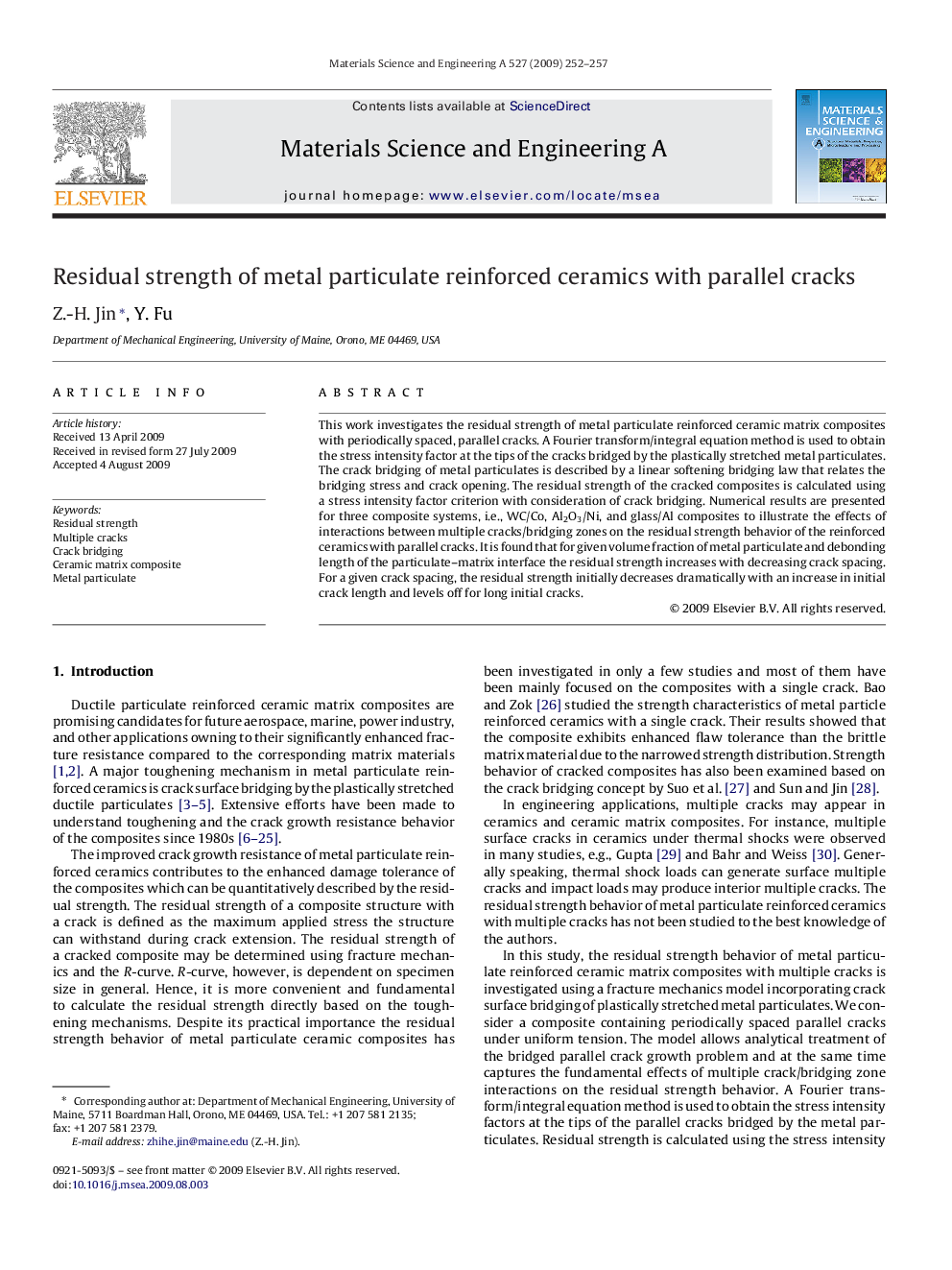| Article ID | Journal | Published Year | Pages | File Type |
|---|---|---|---|---|
| 1580269 | Materials Science and Engineering: A | 2009 | 6 Pages |
This work investigates the residual strength of metal particulate reinforced ceramic matrix composites with periodically spaced, parallel cracks. A Fourier transform/integral equation method is used to obtain the stress intensity factor at the tips of the cracks bridged by the plastically stretched metal particulates. The crack bridging of metal particulates is described by a linear softening bridging law that relates the bridging stress and crack opening. The residual strength of the cracked composites is calculated using a stress intensity factor criterion with consideration of crack bridging. Numerical results are presented for three composite systems, i.e., WC/Co, Al2O3/Ni, and glass/Al composites to illustrate the effects of interactions between multiple cracks/bridging zones on the residual strength behavior of the reinforced ceramics with parallel cracks. It is found that for given volume fraction of metal particulate and debonding length of the particulate–matrix interface the residual strength increases with decreasing crack spacing. For a given crack spacing, the residual strength initially decreases dramatically with an increase in initial crack length and levels off for long initial cracks.
